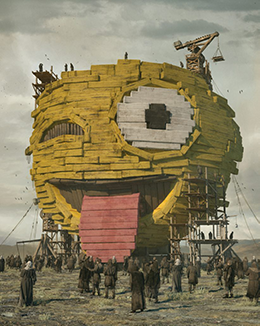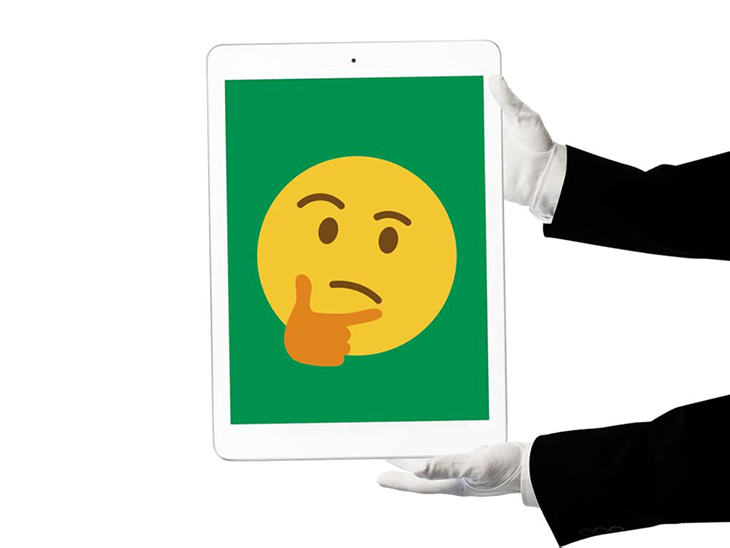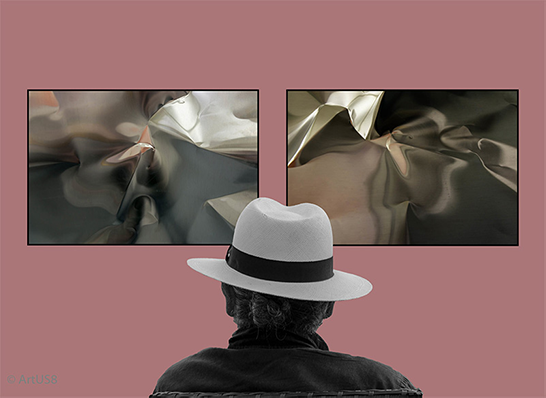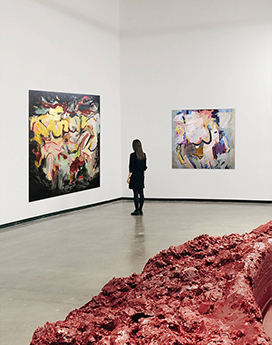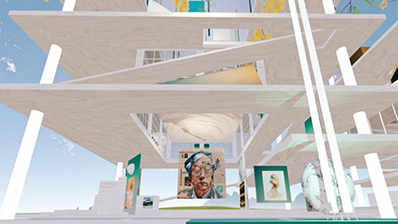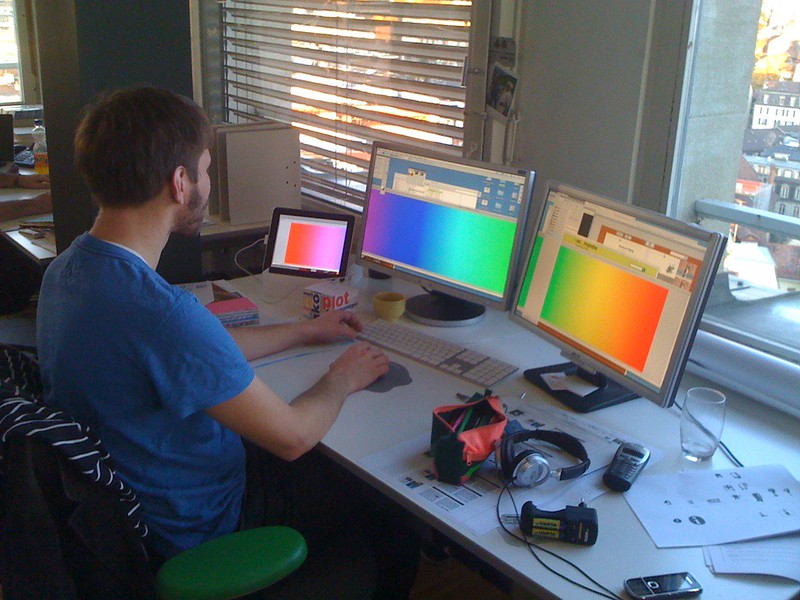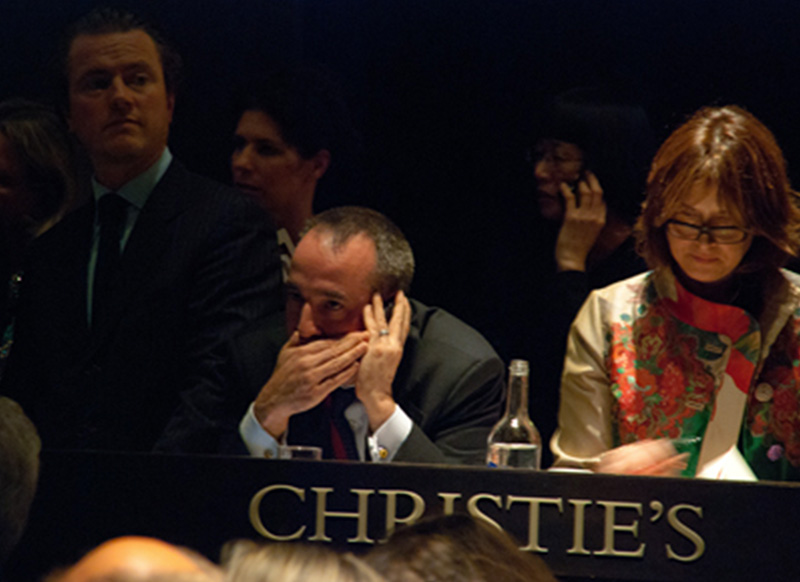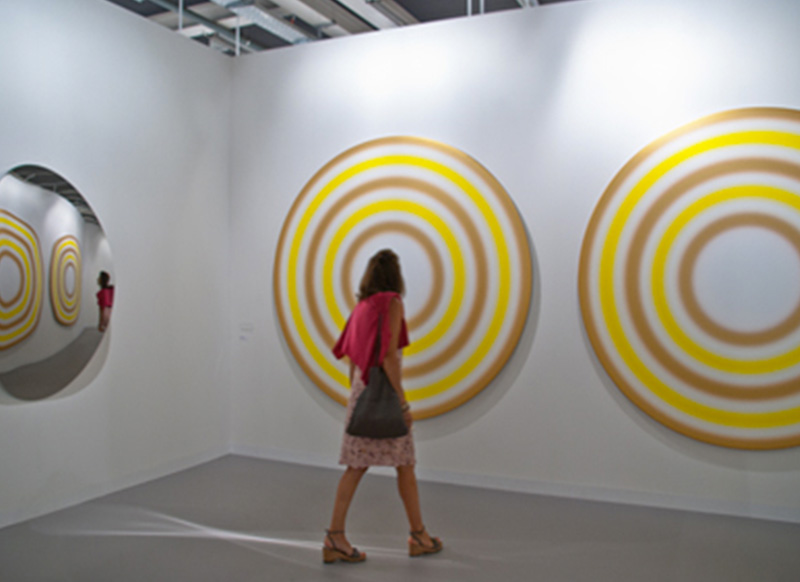O Hype por trás dos NFTs e Crypto no Mundo das Artes
Deixou de ser novidade, mas, no entanto não deixou de ser relevante a marca que a arte digital tem vindo a deixar no sector da cultura nos últimos meses. Por consequência de uma pandemia ou por consequência de progressos tecnológicos, – se em Janeiro poucas eram as pessoas que tinham conhecimento dos NFT’s e crypto art, agora, uns meses depois, é praticamente impossível ouvir os profissionais da indústria das artes falar de outra coisa.
Mas afinal o que são NFT’s? E por quanto estão ser vendidos? Gerem muito dinheiro e vale a pena investir? Ou serão NFT’s nada mais que uma moda passageira?
O que são NFT’s?
NFT é o diminutivo de Non Fungible Token – Token Não Fungível, e funciona como registo ou prova de posse legal de um objecto digital. Estes objectos digitais podem ser qualquer tipo de media, incluindo mas não limitado a pintura, imagens, videos, música, gifs, jogos, texto e até mesmo memes. Se no passado ou aliás, – até há pouco tempo o procedimento mais tradicional de autenticação de objetos e produtos artísticos estava nas mãos de galerias e museus de arte, a chegada abrupta dos NFT’s tornou este processo burocrático mais simples e acessível, actuando como um museu ao passar certificados de autenticação e evidência de posse legal em objetos artísticos na esfera digital.
Como funcionam?
Em 2008, Satoshi Nakamoto, o criador da bitcoin, introduziu um novo método de verificação e de autenticidade de produtos, – agora conhecido por blockchains. As blockchains, no início da sua criação, eram usadas para registar e documentar transações financeiras. Hoje, as blockchain podem ser usadas para qualquer tipo de registo de transação. Desde obras de arte colecionáveis a novos métodos de contabilidade, quase qualquer tipo de transação é possível dentro das blockchain.
No que toca a objetos artísticos, um dos mais importantes aspetos das blockchains é serem praticamente impossíveis de alterar. Um artista pode obter toda a sua documentação e registo de autenticidade de um objeto artístico usando, por exemplo, plataformas de NFT’s, que tornam essas evidências de autenticidade inalteráveis. Estes documentos podem depois ser vendidos ou até leiloados, passando de artistas para colecionadores de arte, o que torna o valor de venda objetos de arte digitais muito alto.
Porquê pagar por um NFT quando posso consumir Arte Digital gratuitamente?
Enquanto Consultora de Arte, esta questão tem aparecido inúmeras vezes nos últimos tempos… Podemos observar um quadro do Picasso de graça, num museu, numa galeria ou até mesmo na internet. No entanto, não faz de ti o dono desse quadro. E até podes ter a melhor réplica de um Picasso mas nunca a vais poder vender sendo o dono verdadeiro. O certificado de autenticação acaba por ser mais importante do que a obra artística, assim, pagar por um Nft é o mesmo que adquirir um quadro original com o seu certificado de autenticidade incluido.
NFT’s podem ser uma nova forma de colecionar arte?
A resposta é sim, começa a haver um interesse por parte do público no geral, em relação aos NFT’s. Sobretudo porque esta rede permite tornar newbies em colecionadores de arte com mais facilidade, ou simplesmente ajudar a quebrar a barreira do primeiro investimento em arte. No entanto, no mercado da arte digital, quando colecionadores compram estes “token’s não fungíveis” estão a comprar na realidade, objectos que não podem ser reproduzidos ou replicados. Comprar um NFT’s é essencialmente comprar uma edição original e limitada de um objeto artístico. Contudo, pode acontecer em alguns casos a obra ter associadas referências externas a outra obra. Por muitas que sejam as razões pelas quais haja uma apreensão relativa a este conceito de se ser proprietário de algo digital, para muitos colecionadores NFT’s são ainda muito raros e por isso, o seu valor líquido pode chegar a ser muito alto com grande potencial de lucro.
A moda dos NFT’s
O rápido crescimento e aderência a esta esfera digital de produtos artísticos trouxe consigo o levantamento de algumas questões e preocupações… O que é que vai acontecer aos NFT’s num período pós-pandemia?
Por um lado, o colecionador Pablo Rodriguez-Fraile (que vendeu um dos primeiro’s NFT’s do artista Beeple por 6.6M $ na Christie’s) acha que os NFT’s “estão aqui para ficar”, explicou de forma convicta, “sim, estamos a passar por um período de hype e de certeza que o valor das obras compradas irá descer, mas os nfts’s seguramente vão continuar a fazer parte do nosso sistema económico”.
Para Cock Foster, – fundador da Nifty Gateway, o retorno à normalidade oferece mais oportunidades e possibilidades do que propriamente obstáculos e repercussões; as galerias e os grandes museus de arte vão ter a capacidade de propor metodologias novas para experienciar arte digital mas num formato tradicional, para além de um espaço virtual. “Arte digital consegue ser imensamente imersiva” Foster explica ainda, “E por isso acho que conseguimos criar experiências físicas muito interessantes usando arte digital.”
Previsões para o Futuro
A Nifty Gateway pode estar ainda a um longa distância do seu objetivo de conseguir ter 1 Bilião de colecionadores ativos na plataforma, no entanto, o crescimento do site revelou um interesse muito focado em crypto art por parte dos consumidores e colecionadores. Em Março de 2021, a plataforma registou transações mensais com o valor de 30,000$. Em Abril, o valor subiu para 75 Milhões, de acordo com uma declaração de Cork Foster.
Este salto gigante claramente que coincide com a maior adversidade económica e social do momento: A pandemia Covid-19… Com todas as galerias e leiloeiras de arte encerradas pelo mundo, e com cada vez mais gente a ter que aderir ao digital como único recurso de consumo de produtos e serviços, os NFT’s aproveitaram esta interrupção do mercado das artes e abriram as portas para um novo tipo de consumo para colecionadores, entusiastas das artes e até mesmo para artistas.
NFT’s e o Mercado das Artes

A Christie’s não é uma leiloeira novata no que toca a aderência às mais recentes tecnologias. A empresa tem organizado eventos e conferencias sobre tecnologia e arte desde 2018. Nessa altura, proclamava-se uma leiloeira percursora ao ter conseguido vender a primeira obra de arte criada por um algoritmo. O retrato de Edmond Belamy, criado por um algoritmo de inteligência artificial, vendido por 40 vezes a estimativa do valor proposto.
O mais recente leilão da Christie’s é a penas a ponta do icebergue relativamente ao mercado dos NFT’s. Coindesk, uma revista de notícias sobre digital currencies, prevê que o valor dos NFT’s irá rondar os 250$ Milhões nos próximos tempos. Plataformas com a Nifty, Opensea e SuperRare que consistem em transações digitais de bens e produtos, tem vindo a expandir-se a comercializar-se com grande rapidez, tornando a comunidade de colecionadores cada vez maior com cada vez mais items por colecionar.
NFT’s são úteis no mercado de arte digital pois permitem solicitar a autenticidade de uma obra e o quão limitada é, apesar da facilidade que é reproduzir e plagiar obras de arte digitais. Os artistas e as galerias tentam criar e reivindicar a singularidade de uma obra usando edições limitadas, cirando certificados a diferença é que os NFT’s rapidamente automatizam esse processo. Como já foi dito, NFT’s documento e registam a posse legal de um objeto usando uma blockchain, que é uma alternativa descentralizada de uma base de dados comum. Ao terem sido programadas por criptografia em comunidades de networks e Coding especificas, as blockchain resistem a qualquer tipo de hacking, plágio, reprodução e cópia de qualquer tipo de objeto, – daí serem tão importantes no arquivo deste tipo de registo.
As grandes leiloeiras de arte ainda estão a tentar acompanhar este novo nicho no mercado da arte. A Sotheby’s já lançou o sei primeiro leilão de NFT’s, um leilão que durou 3 dias e que apenas constou com a venda de obras do artista de crypto Pak. O primeiro dia de leilão, angariou uns exurbitantes 10$ Milhões. A Phillip’s ainda está por leiloar Nft’s pela primeira vez.
Quando a obra “Everydays” do Beeple foi vendida e reconhecida como “o primeiro objeto artístico puramente digital”, a Christie’s auto destacou-se na vanguarda do mundo das artes… Uma declaração exagerada, talvez?
NFT’s e a Indústria dos Museus
No auge da relevância dos NFT’s, atualmente existem mais questões e preocupações do que existem respostas sobre o impacto que os NFT’s tem nos museus e galerias de arte. O tipo de discurso que tem circulado mais relativo aos NFT’s é, sem duvida, um discurso sobre o potencial económico, social e cultural associado ao mercado da arte digital. Contudo, a tecnologia trás consigo, por exemplo, consequências ambientais e obstáculos para a eficiência dos nossos ecossistemas.
Os custos ambientais dos NFT’s
A questão do impacto ambiental é de longe a mais pertinente. “A intensa procura de recursos que possam ser adequados à criação de uma ideia de singularidade e escassez de objetos de arte digital, faz com que seja difícil para os museus encontrarem os meios mais corretos e sustentáveis, e, a ideia que os NFT’s transmitem ao parecerem ser verdes, ecológicos e sustentáveis é longe da verdade e os museus tem que parar para refletir antes de entrarem neste tipo de mercado.” – Holly Shen, Diretora do Museu de Art de San Jose, nos Estados Unidos.
Produção (Minting) de NFT’s para Museums
A ideia dos museus produzirem os seus próprios objetos artísticos começou no início do ano, quando um coletivo chamado Global Art Museum registou um conjunto de NFT’s a partir das coleções de museus de acesso público como o Rijksmuseum na Holanda e o Art Institue of Chicago nos Estados Unidos, fazendo disso uma experiência social. Enquanto instituições públicas, tradicionais e sem fins lucrativos, os museus não precisam necessariamente de aderir mercado dos NFT’s, mas existe um bom potencial para lucrar. A colaboração com artistas em NFT’s em nome da caridade é uma opção, tal como pedir a artistas para produzirem edições limitadas de obras de arte ou obras colecionáveis em nome do museu. Mas, mais simples ainda, seria abrir uma carteira de crypto e deixar as pessoas doarem o que quisessem…
NFT’s criam mais oportunidades?
Limitações e problemáticas relativas ao acesso e à inclusão começaram a passar do modelo tradicional para o modelo digital desde os anos 60. As práticas artísticas e os comportamentos culturais muitas vezes imitam as normas e os valores que as instituições impõem. Desse modo, questões de diversidade, representação e igualdade continuam a prevalecer no mercado das artes e em particular e sem excepção na esfera dos NFT’s. No entanto, a ausência de estabelecimentos institucionais cria de certa forma um tipo de ambiente mais livre e justo para artistas e entusiastas.
Galerias e Arte Digital
Artistas que nunca trabalharam com NFT’s estão a começar a fazê-lo, sem a ajuda e apoio de galerias que têm pouco acesso à comunidade de arte crypto, mas com ajuda de especialistas do mercado. O presidente da plataforma de NFT’s MakerPlace, Daniel Chu, prevê que empresas como as dele, ao longo do tempo, vão acabar por desmistificar e abandonar as normas das instituições tradicionais. “Se existe alguma indicação de exemplos anteriores” diz Chu, “Coisas que são assimiladas por um movimento digital tendem a deixar de existir”.
Mas isso está longe de acontecer… As plataformas de NFT’s continuam com dificuldades em promover e curar obras de arte para serem leiloadas da mesma forma organizada e especializada que as galerias e leiloeiras tradicionais fazem. A ideia principal na indústria das artes é que o objecto em si seja determinado pelo conceito que existe nele inerente e não determinado pelo valor monetário. Qualquer pessoa consegue vender um NFT em qualquer plataforma adequada, mas visitar estes sites é o equivalente a navegar por um oceano de imagens completamente indiferenciadas.
No entanto, o mundo dos NFT’s não está a ficar para trás. Em Março, Casey Reas um artista e curador em Los Angels, inaugurou um espaço chamado Feral File. Reas seleciona pequenos grupos de artistas de NFT’s que abordam os mesmos temas e que trabalham com as mesmas práticas, para mais tarde apresentar as obras produzidas numa exposição virtual e vender as edições limitadas como NFT’s. É um meio-termo entre as plataformas de arte digital e as galerias tradicionais; adoptar a tecnologia e o sistema económico dos NFT’s com o rigor, expertise e conhecimento que as instituições tradicionais têm.
Surpreendentemente, cada vez mais artistas estão a recorrrer às tradicionais casas de leilões para vender novas obras. Instituições como a Christie’s ou a Sotheby’s ficam com comissões mais baixas do que as grandes galerias que normalmente controlam o mercado primário, e as suas marcas carregam mais capital cultural. Estas instituições são também especialistas em gerar interesse à volta dos seus eventos. “Há menos contra-partidas em trabalhar com uma casa de leilões”, disse Robert Alice, o primeiro artista NFT da Christie’s. “Está-se a tornar óbvio que para quem quer ganhar exposição, as casas de leilões podem ser muito melhores que as galerias.”
Arte Digital vale mais do que Arte Tradicional?
Em resposta ao isolamento social e à ausência de consumo de produtos e experiências culturais de forma presencial, surgiu este novo sistema de consumo: o consumo liquido que essencialmente ultrapassa o universo do consumo de objetos materiais. O conceito do consumo liquido reforça a desmaterialização de produtos culturais e experiências.
Porém, a ideia de que grandes colecionadores estão a pagar valores altíssimos por obras de arte que podem ser vistas e partilhadas de forma gratuita online não é assim tão simples… Alguns colecionadores de obras digitais afirmam investir em obras deste cariz não pela estética mas pelo trabalho que o artista teve ao criar o objeto em si. E sim, claro que a exclusividade da obra é sem dúvida o aspeto mais significante neste contexto de investimento.
NFT’s são benéficos para os Artistas?
Muitos artistas visuais, depois de anos de criação de conteúdos digitais para grandes redes sociais, tais como Facebook e Instagram, por não terem conseguido obter virtualmente nenhum retorno monetário, juntaram-se, quase que por impulso, à moda dos NFT’s. Designers, Realizadores, Músicos, todos eles conseguem ver um futuro benéfico neste mercado; onde o processo criativo é redefinido pela forma como os objetos digitais são consumidos. Visto que agora é possível ser dono de/ vender obras de arte digitais. “Vamos ter tantos indivíduos de percursos e backgrounds diferentes a partilhar a sua arte, a criar novas ligações com outras pessoas e potencialmente fazer crescer as suas carreiras profissionais”. Diz Boykins, uma artista visual que costumava partilhar o seu trabalho gratuitamente nas redes sociais, “Os artistas investem imensas inúmeras horas do dia nos seus trabalhos, vê-los serem recompensados de uma forma justa e digna, é muito reconfortante.”
O mercado dos NFT’s funciona de forma diferente. São os artistas, normalmente, que fazem parte do mundo das blockchains e da comunidade de crypto art, que usam as redes sociais como plataformas para fazer crescer as suas audiências e que conseguem vender os seus trabalhos diretamente a colecionadores usando plataformas específicas como MakersPlace e NiftyGateway. Estas plataformas ficam com aproximadamente 10% de comissão de cada venda feita, oferecendo ainda royalties e direitos de autor automaticamente a valores descritos pelos próprios artistas. De acordo com o artista de crypto art, Robert Alice, depois de três a quatro semanas, o artista faz mais dinheiro com a re-venda da sua obra do que quando a vendeu ao valor inicial.
O Potencial dos NFT’s
Os NFT’s permitem a criação de novos modelos empresariais, nunca antes imagináveis. Os artistas podem criar as suas próprias condições nos NFT’s, assegurando-se que têm direito a uma comissão em cada vende que é feita, implicando um grande beneficio de lucro pois o valor das obras vai subindo com cada compra. Até os jogadores de futebol têm usado tipos de contractos semelhantes aos que os artistas usam nos NFT’s, permitindo assim um aumento exponencial da sua comissão em cada venda e troca de equipa.
Novas plataformas de arte, como a Niio Art, por exemplo, demonstram uma grande simplicidade em adquirir NFT’s. Quando um consumidor compra um produto da plataforma, o produto é exposto num ecrã com uma nota que esclarece as questões de direitos de autor e de exclusividade, visto que NFT’s e blockchains garantem autenticidade.
Além disso, os NFT’s oferecem aos músicos o potencial de fornecer itens vantagens especiais aos seus fãs. E, no que diz respeito a artigos de desporto, entre 50% e 80% dos objetos são considerados falsos. Colocar estes objetos nos NFT’s com um registo de transações transparente e eficiente, pode resolver este tipo de problema de falsificação.
Mas, para além destas áreas, o potencial dos Nft’s vai bem mais longe, até porque este mercado muda completamente as regras de propriedade. As transações das quais a propriedade de algo muda de mãos , geralmente dependem de dezenas de intermediários para estabelecer o mínimo de confiança na transação, é importante trocar contratos e garantir que o dinheiro mude de mãos.
Haverá muitas outras melhorias nesta economia descentralizada que ainda não foram imaginadas. Será um tipo de mercado muito mais transparente e direto do que aquele a que estamos acostumados.
Como comprar NFT’s
Há uma variedade de plataformas nas quais podemos comprar e vender NFT’s: NiftyGateway, MakersPlace, OpenSea e Rarible são apenas algumas das muitas plataformas dedicadas à compra e venda desses tipos de objetos. Para aqueles que podem estar interessados em obras colecionáveis relacionadas com desporto e NBA, vejam o exemplo do NBA Top Shot – onde 230$ Milhões foram gastos apenas na troca e revenda de NFT’s.
Como criar e vender NFT’s
No caso de serem artistas, designers ou qualquer outro tipo de criador de artes visuais, podem fazer e transformar qualquer coisa que criem num NFT. O famoso Nyan Cat, sabem? Aquele gato em pixel art com um rasto de arco-íris? Sim, esse mesmo! O gato animado que voa no espaço com um arco-íris atras dele … O Nyan Cat foi vendido como um NFT por quase mais de meio milhão de dollars. A única coisa que precisam de fazer é inscreverem-se numa dessas plataformas, e o resto é quase magia por ser tudo tão simples, intuitivo e acessível.
O processo difere de site para site, obviamente, mas podem começar em plataformas como o Nifty Gateway, onde, basicamente é só necessário estar inscrito para criar um projeto que possa ser vendido como um NFT.
Conclusão
- Um NFT é essencialmente uma obra de arte digital sobre a qual se pode reivindicar posse.
- Os NFTs são uma forma mais fácil de vender e comprar trabalho autenticado, através da internet.
- Os NFTs permitem a qualquer pessoa ser dona de um determinado conteúdo digital, bem como dar aos vendedores e criadores um ambiente seguro e regulado para a venda das suas obras, facilitando o processo a alguém interessado em investir ou simplesmente em coleccionar obras.
- Os NFTs são úteis no mercado da arte digital uma vez que permitem reivindicações de autenticidade e exclusividade.
- Os NFTs reconstroem tanto o processo criativo do artista como a forma como o mundo pensa na arte, sendo agora pela primeira vez efectivamente possível ser “proprietário” de arte digital e vendê-la, permitindo que os artistas beneficiem da venda directa do seu próprio trabalho.
- Os NFTs criam a possibilidade de novos modelos de negócio. Os artistas podem anexar condições ao NFT que garantem que receberão uma determinada comissão cada vez que a obra for revendida, o que significa que irão beneficiar de qualquer aumento de valor da obra.
- Os NFTs podem ser altamente valorizados dependendo de quão “viral” ou “na moda” a obra estiver. Dada a sua “viralidade”, faz sentido que se entre nesta nova corrente o mais rápido possível, caso contrário, devido às flutuações económicas e do mercado, corre-se o risco de perder o impulso e com isso o valor da obra em que se esteja interessado.
